Bài giảng Phương pháp kiểm tra và đánh giá học tập - Chapter 5: Testing vocabulary
I. Selection of items
Tasks of a test constructor:
(1) to determine the degree to which
concentrating on passive or active vocabulary
(2) to decide whether the items should be taken
from spoken or written language
Lexical items selected from: (i) the syllabus,
(ii) Sts’ textbook, (iii) Ss’ reading materials, (iv)
and lexical errors from their free written work
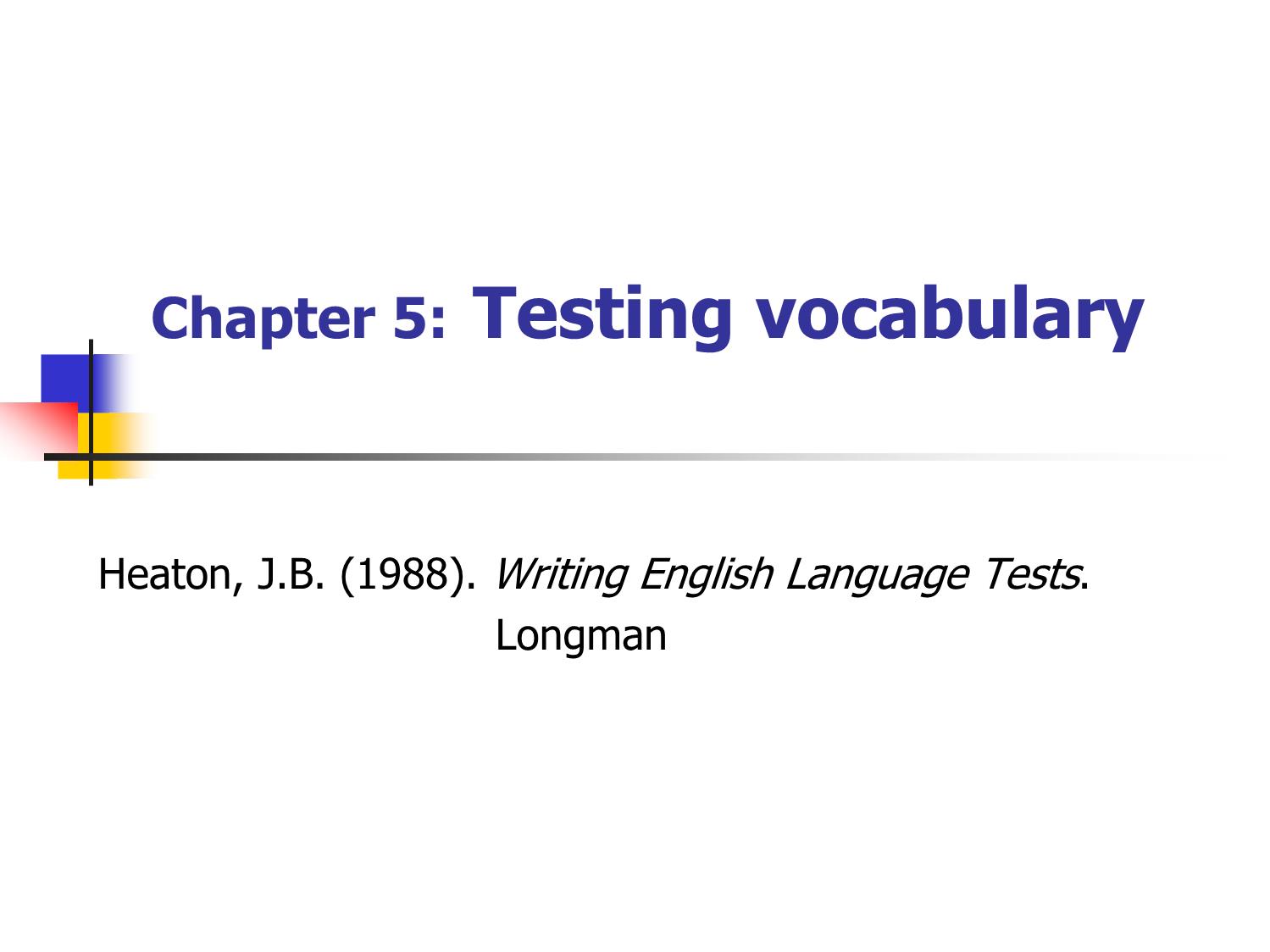
Trang 1
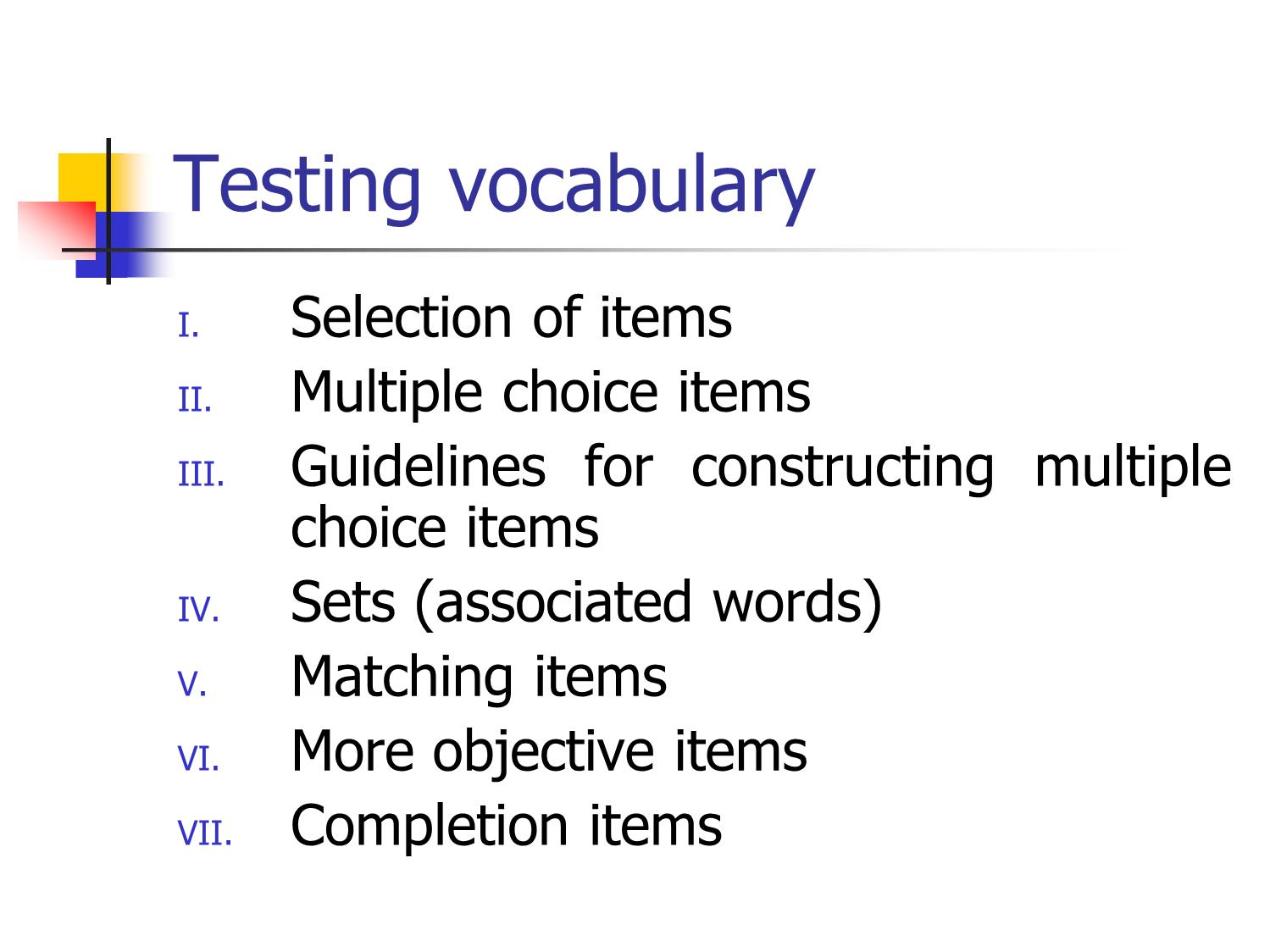
Trang 2
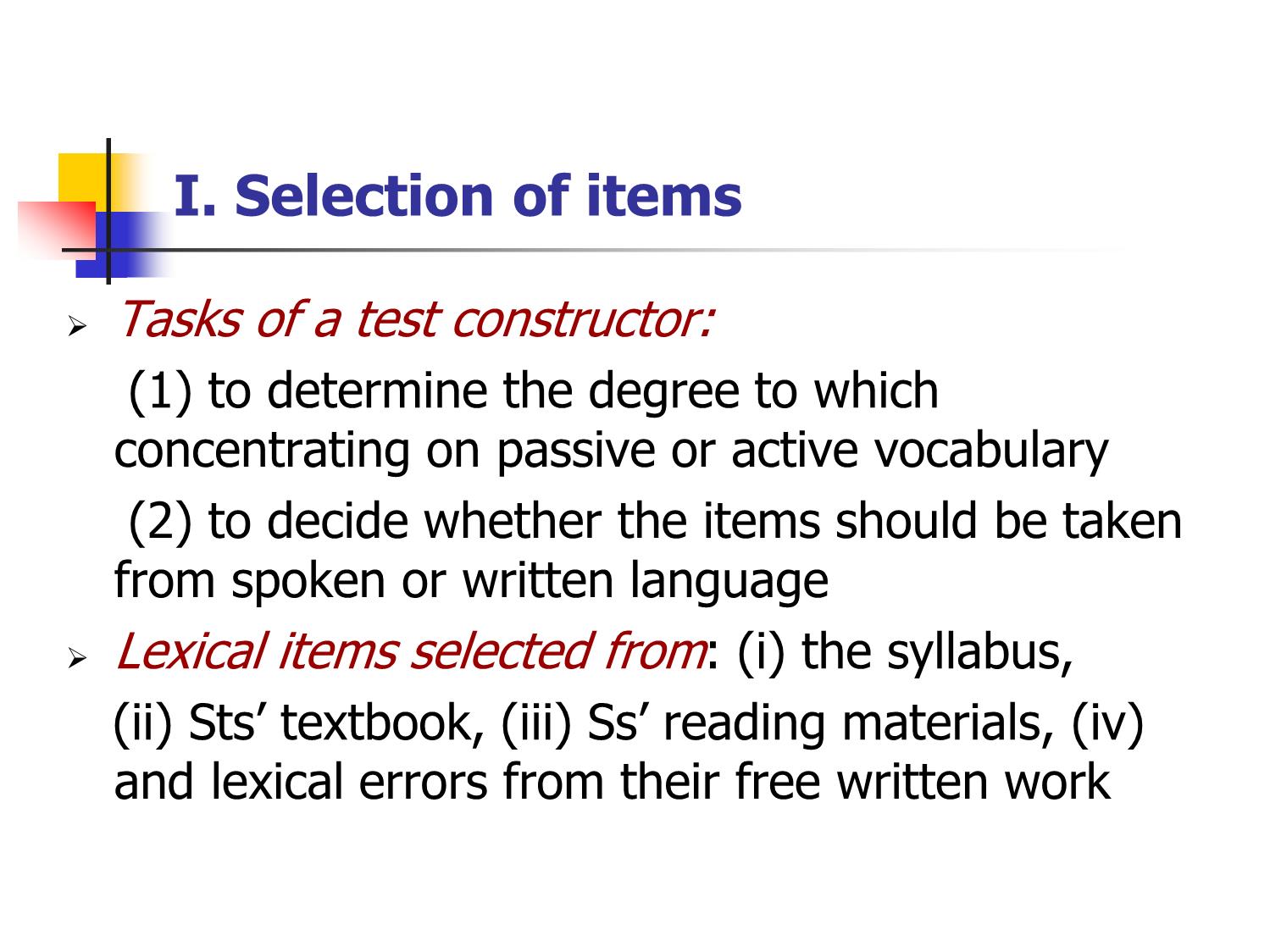
Trang 3
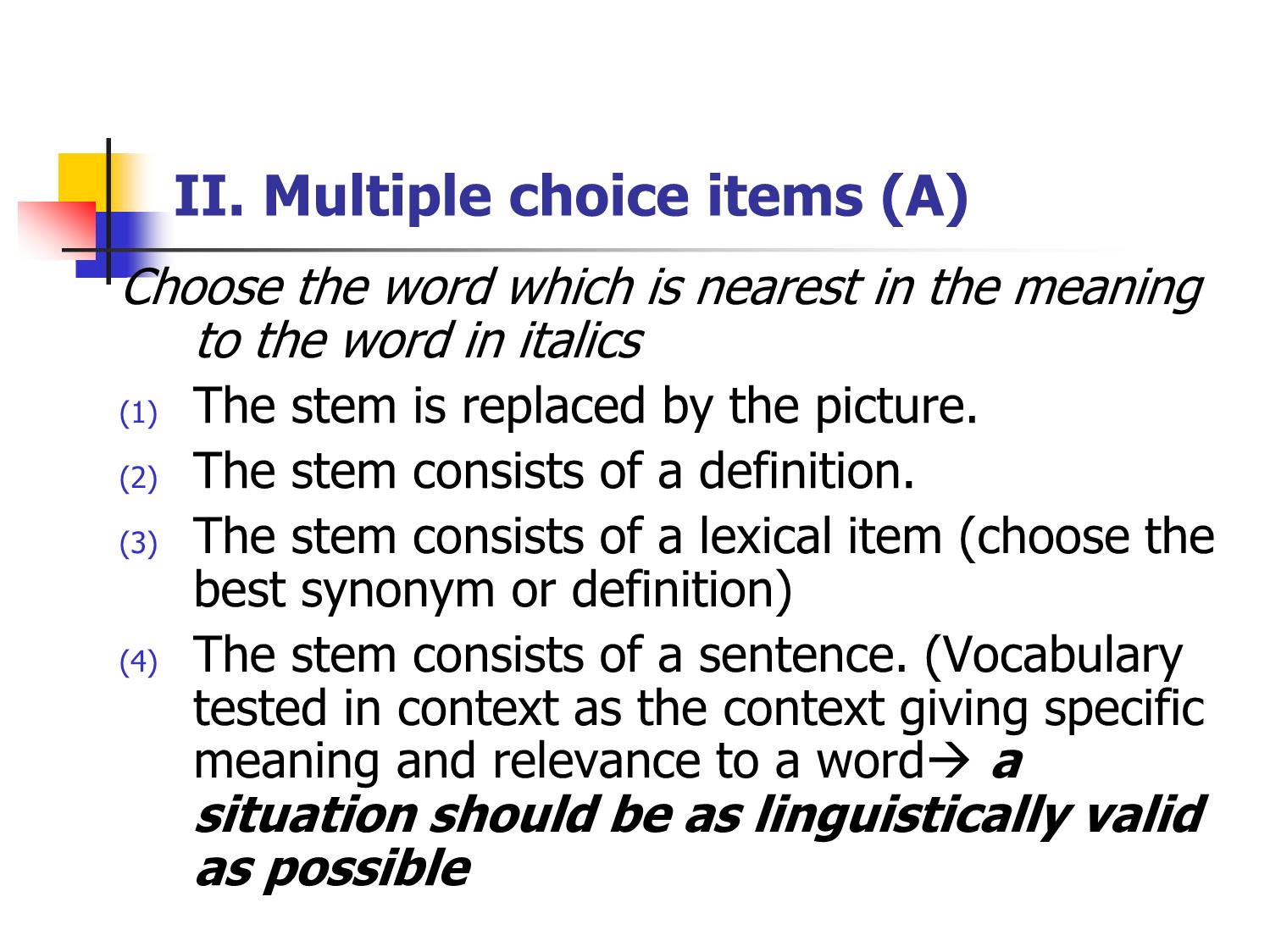
Trang 4
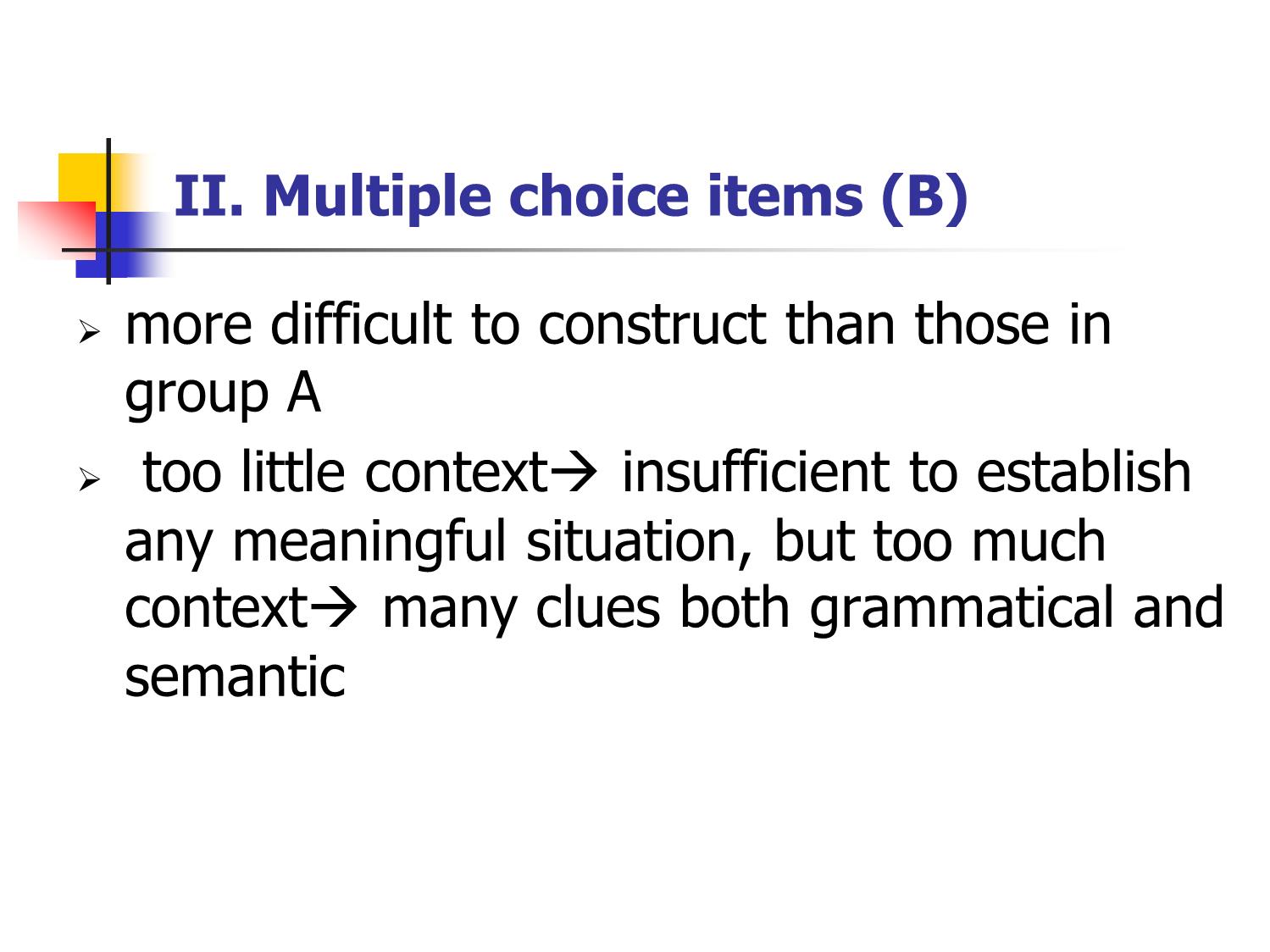
Trang 5
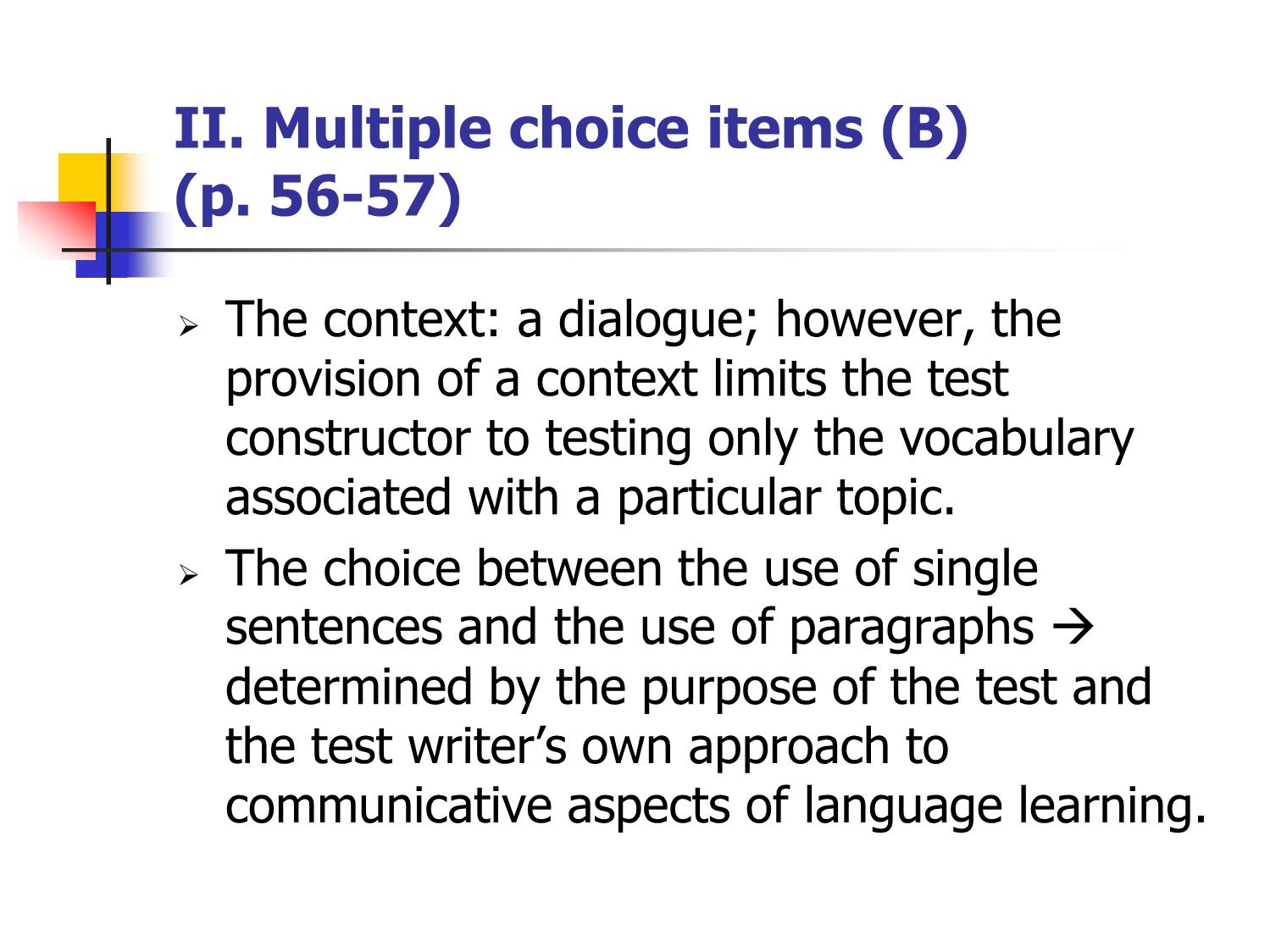
Trang 6
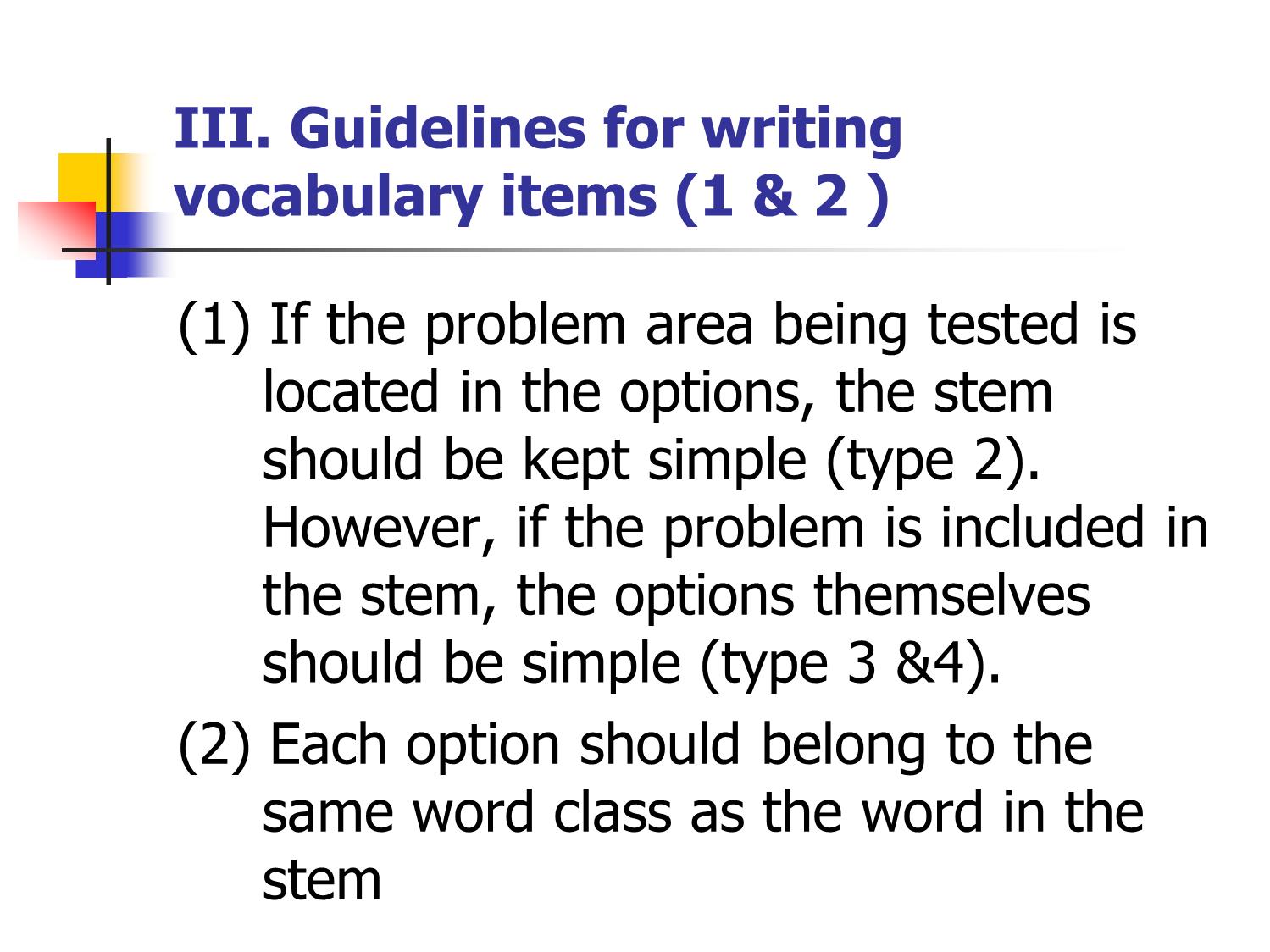
Trang 7
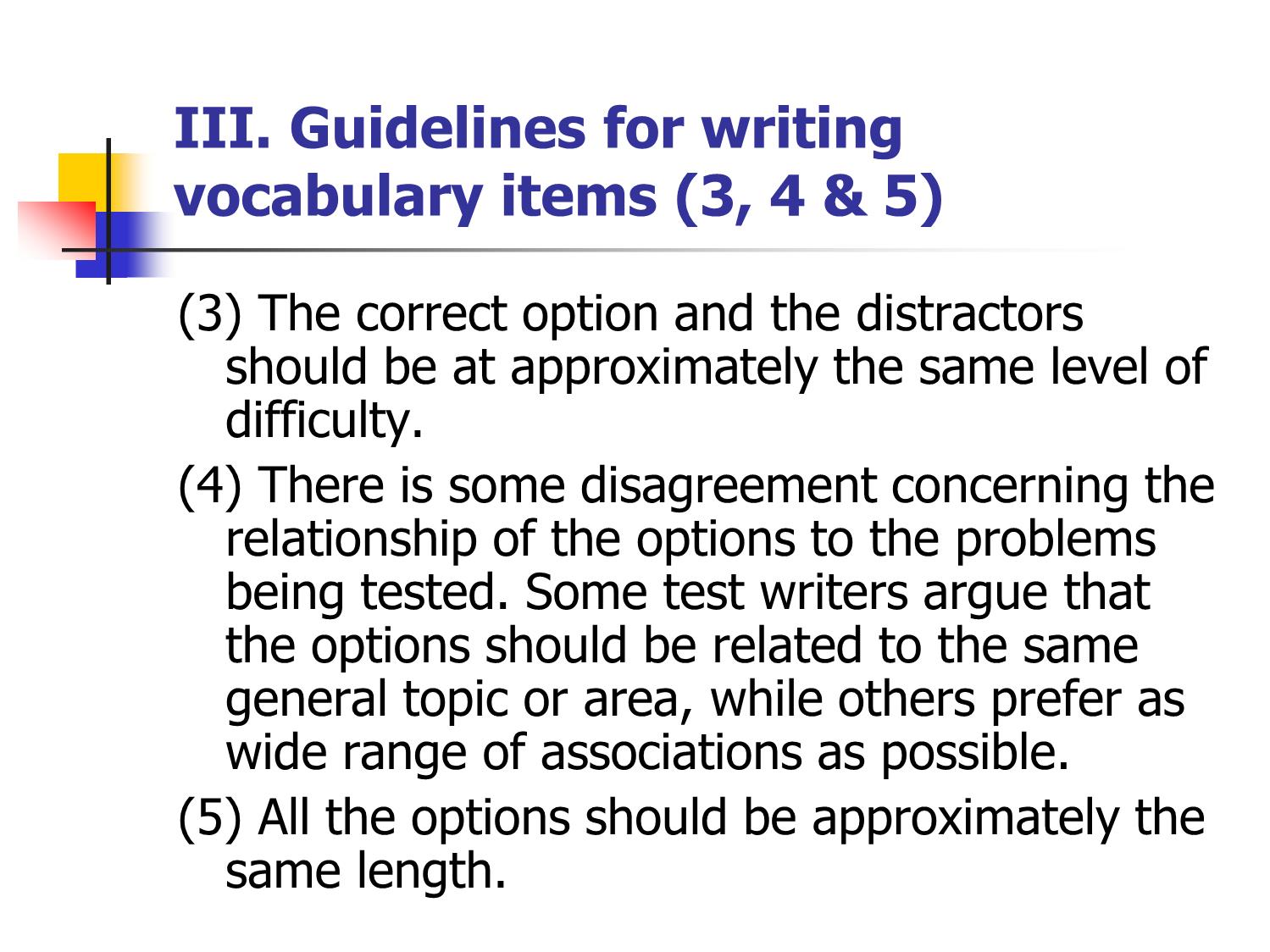
Trang 8
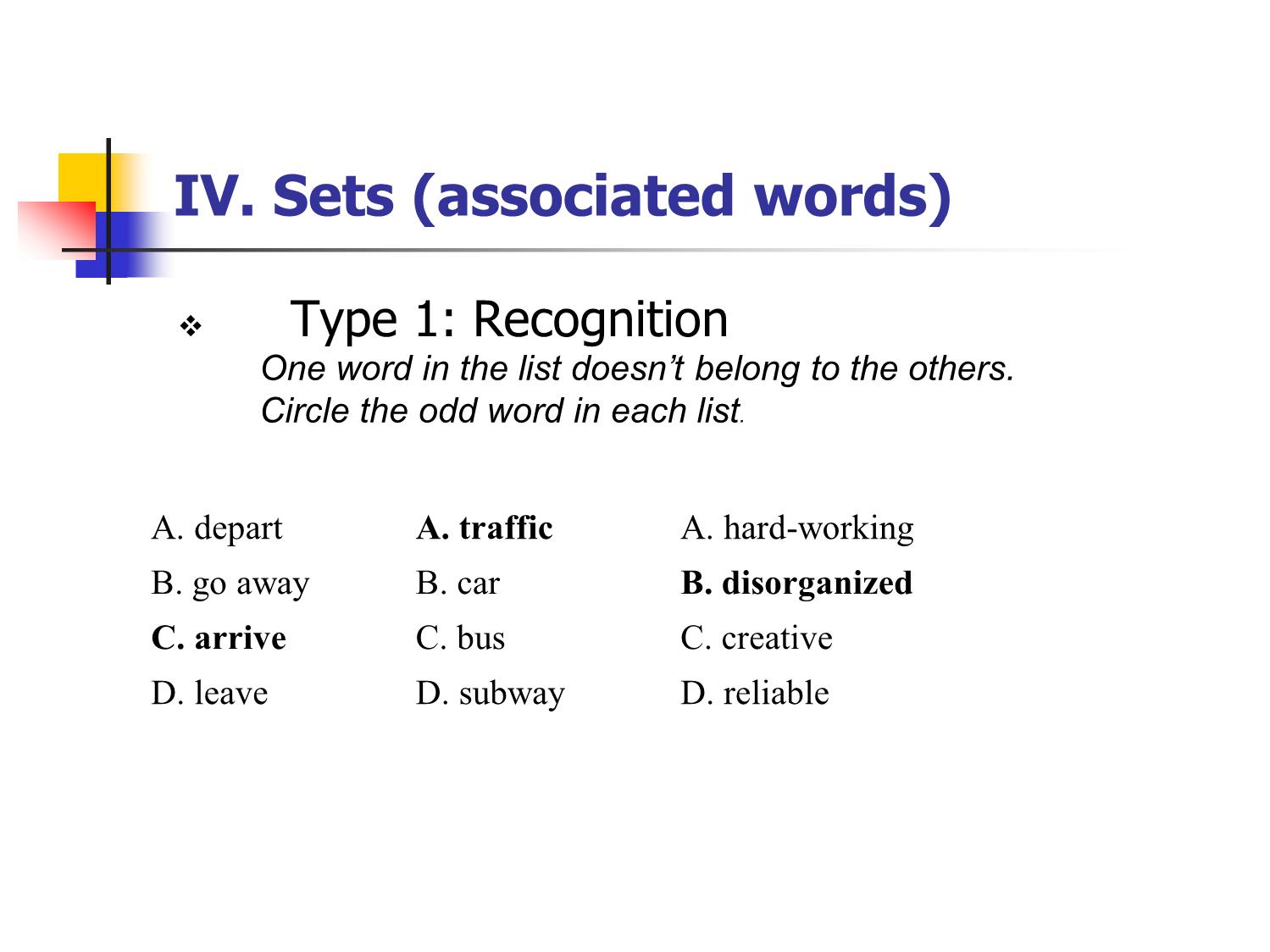
Trang 9
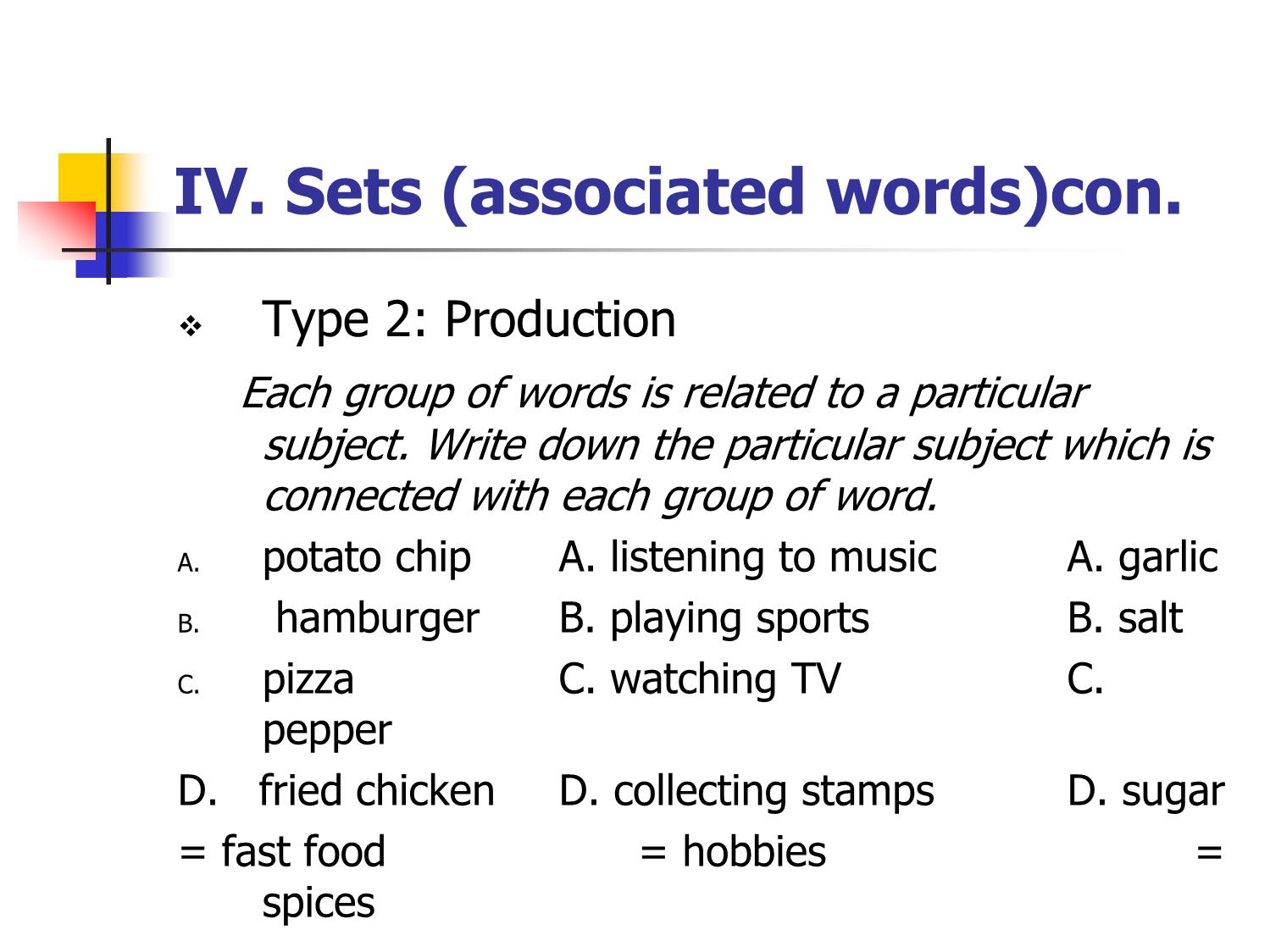
Trang 10
Tải về để xem bản đầy đủ
Bạn đang xem 10 trang mẫu của tài liệu "Bài giảng Phương pháp kiểm tra và đánh giá học tập - Chapter 5: Testing vocabulary", để tải tài liệu gốc về máy hãy click vào nút Download ở trên
Tóm tắt nội dung tài liệu: Bài giảng Phương pháp kiểm tra và đánh giá học tập - Chapter 5: Testing vocabulary
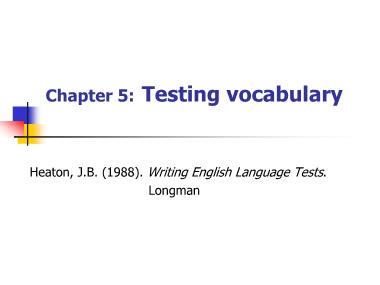
Chapter 5: Testing vocabulary Heaton, J.B. (1988). Writing English Language Tests. Longman Testing vocabulary I. Selection of items II. Multiple choice items III. Guidelines for constructing multiple choice items IV. Sets (associated words) V. Matching items VI. More objective items VII. Completion items I. Selection of items Tasks of a test constructor: (1) to determine the degree to which concentrating on passive or active vocabulary (2) to decide whether the items should be taken from spoken or written language Lexical items selected from: (i) the syllabus, (ii) Sts’ textbook, (iii) Ss’ reading materials, (iv) and lexical errors from their free written work II. Multiple choice items (A) Choose the word which is nearest in the meaning to the word in italics (1) The stem is replaced by the picture. (2) The stem consists of a definition. (3) The stem consists of a lexical item (choose the best synonym or definition) (4) The stem consists of a sentence. (Vocabulary tested in context as the context giving specific meaning and relevance to a word a situation should be as linguistically valid as possible II. Multiple choice items (B) more difficult to construct than those in group A too little context insufficient to establish any meaningful situation, but too much context many clues both grammatical and semantic II. Multiple choice items (B) (p. 56-57) The context: a dialogue; however, the provision of a context limits the test constructor to testing only the vocabulary associated with a particular topic. The choice between the use of single sentences and the use of paragraphs determined by the purpose of the test and the test writer’s own approach to communicative aspects of language learning. III. Guidelines for writing vocabulary items (1 & 2 ) (1) If the problem area being tested is located in the options, the stem should be kept simple (type 2). However, if the problem is included in the stem, the options themselves should be simple (type 3 &4). (2) Each option should belong to the same word class as the word in the stem III. Guidelines for writing vocabulary items (3, 4 & 5) (3) The correct option and the distractors should be at approximately the same level of difficulty. (4) There is some disagreement concerning the relationship of the options to the problems being tested. Some test writers argue that the options should be related to the same general topic or area, while others prefer as wide range of associations as possible. (5) All the options should be approximately the same length. IV. Sets (associated words) Type 1: Recognition One word in the list doesn’t belong to the others. Circle the odd word in each list. A. depart A. traffic A. hard-working B. go away B. car B. disorganized C. arrive C. bus C. creative D. leave D. subway D. reliable IV. Sets (associated words)con. Type 2: Production Each group of words is related to a particular subject. Write down the particular subject which is connected with each group of word. A. potato chip A. listening to music A. garlic B. hamburger B. playing sports B. salt C. pizza C. watching TV C. pepper D. fried chicken D. collecting stamps D. sugar = fast food = hobbies = spices V. Matching items (p.58-60) Type 1: testing lexical items from different word classes Type 2: testing verb tense forms Type 3: testing lexical items from the same world class Type 4: items based on a reading comprehension passage (the most useful type). Sts are given a list of words at the end of the passage and required to find words of similar or different meaning in the passage VI. More objective items Word formation items e.g. (care) Be.. when you cross the road. Items involving synonyms e.g. I came cross an interesting book. .found it by chance.. Rearrange items e.g. ROLRY LORRY Definitions: this type of item tests writing ability in addition to a knowledge of word meanings. VII. Completion items Read a passage containing incomplete words; and write completed words. e.g. Snakes are one of the (1) d-m-n--t groups of (2)r-pt----. (1) dominant (2) reptile Complete each blank (in conversation or passage) with the most appropriate word. (Read more examples on page 62)
File đính kèm:
 bai_giang_phuong_phap_kiem_tra_va_danh_gia_hoc_tap_chapter_5.pdf
bai_giang_phuong_phap_kiem_tra_va_danh_gia_hoc_tap_chapter_5.pdf

